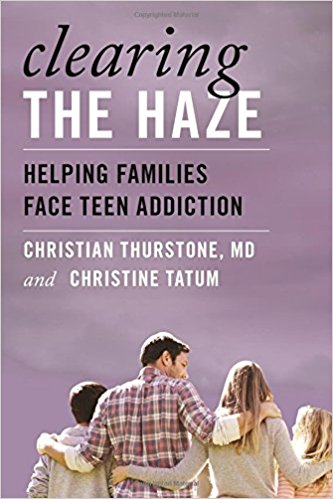For decades, medical research has shown that marijuana use is strongly associated with the development of psychosis. Now, research announced this month by the Royal College of Surgeons in Ireland is breaking even newer ground by showing how marijuana use during adolescence causes specific changes in regions of the brain associated with psychosis and the psychotic disorder schizophrenia.
Psychosis is a medical term that describes auditory and visual hallucinations. Simply put, people who are psychotic are delusional. They may see or hear things that aren’t real. Their minds often play terrible tricks on them that surface as extreme paranoia and anxiety. There are different psychotic disorders, but people tend to be most familiar with schizophrenia — which is one of the most emotionally difficult diagnoses for me to deliver to young people and their families.
The first study revealing the link between adolescent marijuana use and the development of psychosis in early adulthood was released in Sweden in 1988. Since then, six other large studies have been conducted. Like that first Swedish investigation, they have shown a two-to-four-fold increase in the development of psychosis in young adults who used marijuana during adolescence. These studies have controlled for more than 60 variables, including gender, family history of psychosis, pre-existence of psychosis and the use of other substances along with marijuana. All of these studies have reinforced the relationship between adolescent marijuana use and the development of psychosis.
The studies have also supported this very important finding — one that you would expect of any causal relationship (meaning marijuana use isn’t just correlated, or associated, with psychosis, it is, instead, the cause):
The more marijuana an adolescent smokes, the greater his or her chances of developing psychosis.
I want to make sure I’m clear: everyone who smokes marijuana as a teenager will not experience psychosis or battle schizophrenia for the rest of his or her life. However, the science is mounting — and it is showing that the more marijuana a young person smokes, the more he or she risks developing psychosis and, specifically, schizophrenia.
That should be especially alarming considering that today’s marijuana is more addictive than ever. In fact, it’s up to 10 times more potent than marijuana used in the 1960s. It’s not hard to connect the dots among a more addictive substance, more use and more risk of psychosis. Yet this science is very sadly and shamefully under-reported by national and international news media and readily dismissed as “Reefer Madness” by drug-legalization proponents. (I must note that Brian Freskos, a reporter for the (Wilmington, N.C.) Star-News did a nice job of explaining on May 21 how marijuana producers spike their product to make it more potent — and addictive. Please read the story. As you do, know what I was thinking: “A. This plant is anything but ‘natural,’ and B. People have no idea what they’re really smoking.”)
I’m not sure the new research coming out of Ireland will wake up journalists, and I’m sure it won’t change the ridiculous arguments launched by drug-legalization champions, but it’s something you should know about. This is the first study showing how cannabis use during adolescence can cause physical changes in the brain that increase the risk of developing schizophrenia. These researchers found changes in cell size, density and protein levels in the three areas of the brain they assessed.
“Increased knowledge on the effects of cannabis on the brain is critical to understanding youth mental health both in terms of psychological and psychiatric wellbeing,” Dr. Áine Behan, the study’s lead author, said in a statement.
She’s right — which is why our nation’s elected officials should focus on the special and unique needs of children and adolescents when determining whether marijuana should be legalized.



Just for the sake of keeping a record, it’s interesting to note:
* Sept. 15, 2012: Actress Amanda Bynes, who has been spotted smoking what is believed to have been marijuana while behind the wheel, reportedly is exhibiting behavior consistent with the auditory and visual delusions (psychosis) addressed above.
* July 2012: Toxicology reports on the late Rudy Eugene, whom authorities said literally chewed off a man’s face in Miami in May 2012, found only marijuana in Mr. Eugene’s system.